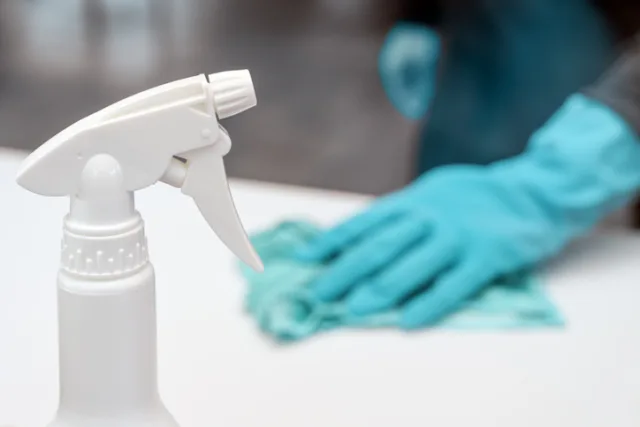
In the Literature
Wipond M, Prittie J, Mastrocco A, Donovan TA. Fatal exposure to quaternary ammonium disinfectant in 2 dogs. J Vet Emerg Crit Care (San Antonio). 2023;33(3):380-387. doi:10.1111/vec.13299
The Research …
Quaternary ammonium products (commonly used disinfectants in animal care facilities) have a wide biocidal spectrum and are typically formulated to be diluted prior to use. Dilution minimizes the risk for localized and systemic harm. Exposure to undiluted products often results in severe clinical signs and may cause death, even when a seemingly low concentration is involved.
This case series discussed fatal exposure of 2 dogs to different quaternary ammonium products in kennel-type facilities in unrelated incidents. Timing for onset of initial clinical signs was not included, but signs noted by veterinary staff ≈24 hours after exposure included significant lethargy, ptyalism, vomiting, erythematous dermal lesions, respiratory distress, bloody nasal discharge, lingual swelling with ulceration, and pain (likely due to ulceration, delayed gastric emptying, and regurgitation). Blood work abnormalities in both patients included hemoconcentration, hypoglycemia, hypoproteinemia, thrombocytopenia, and increased aspartate aminotransferase activity. Changes to WBC lines indicative of systemic inflammation and sepsis also occurred.
A 24-hour delay in initial therapy appears to have occurred in both cases, likely contributing to the severity of clinical signs and poor outcome. Treatment for both patients included IV fluids, gastroprotectants, antiemetics, analgesics, antimicrobials, and oxygen therapy. Due to ongoing and worsening signs, euthanasia was elected for both dogs. Combined necropsy findings included erosive dermatitis; mucosal erosion and ulceration of the lips, tongue, hard palate, and GI tract; and pleural effusion. Microscopic evaluation for both patients was consistent with necrosis of the GI tract and skin.
… The Takeaways
Key pearls to put into practice:
Immediate attention should be given to patients exposed to disinfectants or other cleaning products to identify active ingredients and determine potential harm and treatment requirements.
Prompt dermal decontamination and initiation of therapy may help minimize tissue and organ damage. Emesis induction should be avoided to minimize esophageal exposure. Clinical signs progress rapidly, and delayed therapy may result in severe injury or death.
Concentrations of quaternary ammonium products can be misleading, as concentrations ≥10% are highly dangerous. Clinical signs can also develop with lower concentrations; therefore, exposure to any quaternary ammonium product, regardless of concentration, should be addressed quickly.
Assessing potential concerns associated with disinfectants or other cleaning products can be difficult. A poison control center (eg, Pet Poison Helpline, ASPCA Animal Poison Control Center; see Suggested Reading) can help determine degree of concern and treatment needs.
You are reading 2-Minute Takeaways, a research summary resource proudly presented by Clinician’s Brief. Clinician’s Brief does not conduct primary research.